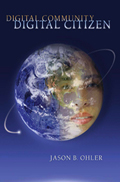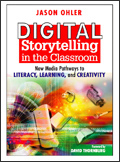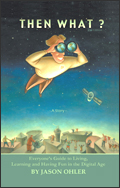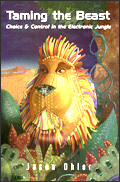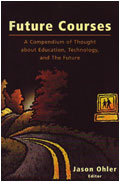Digital Storytelling in the Classroom: New Media Pathways to Literacy, Learning and Creativity begins with the chapter entitled "Twenty Revelations about Digital Storytelling in Education." We are up to revelation 13 in this journal. You are invited to visit previous journal entries to read the first twelve.
Revelation #13: Stories help us remember.
Book excerpt: "It was the practical value of storytelling that ultimately led me to see its utility as a learning tool. Story's structure and rhythm, as well as the emotional involvement it encourages, can help us remember important information that might be forgotten if it is delivered to us in the form of reports, lectures, or as isolated bits of information. It is precisely this quality of story, covered in detail in Part II of the book, that makes it so useful as an information organizer. While this quality has always been a hallmark of stories, it is particularly poignant now because we desperately need tools to navigate and coordinate the information that constantly overwhelms us. In many ways, story is the antidote to information overload."
----------------
TECHST MESSAGES... news bits from the tEcosystem...

A Primer for the Immediate 21st Century, in 3 Steps
Are you pressed for time but need a big picture overview of the world according to Gates, Google and the other digiGiants who seem to be running the world? Then I recommend taking the following three steps:
Step 1: Watch "Epic 2015," by Robin Sloan and Matt Thompson. As far as new media goes, this is ancient (that is, already a few years old). But it's still an excellent, quick intro about how we are becoming embedded in the World Wide Web. I love showing it to audiences just to hear them gasp.
Step 2: Read "Scan This Book," by Kevin Kelly. It places the world of words, books and ideas on a continuum stretching from many centuries ago to at least a few decades from now.
Step 3: Read "Second Earth," by Wade Roush. Google Earth and Second Life merge, and through our direct disconnection from the world of limitations we reconnect with it through the world of imagination.
---
What's Web 3.0? The WWW is supposedly in its secondary incarnation, Web 2.0, which compels us to ask: What was Web 1.0 and what is Web 3.0?
- Web 1.0: A library and store
- Web 2.0: A social network and participatory commons
- Web 3.0: An ecosystem
More specifically, a "tEcosystem" (TEE-ko-sis-tem), an ecosystem created by humans, consisting of digital technology, connectivity and the communication they facilitate. The semantic, contextual web that is just now forming the basis of Web 3.0 will provide connections beneath the surface of our experience without our conscious direction, forming the subsystems necessary for a true ecosystem to develop. Web 3.0 is a big step away from our just using the Web and toward our actually becoming the Web.
---
A Web 3.0 Primer in 4 Steps. Want a quick overview of Web 3.0 that will bring you more or less up to speed, at least for this week? Follow these four steps:
Step 1: Read Wikipedia's Overview. This is a great starting point.
Step 2: Read W3C's technical description. It's a difficult read for non-technicians, but read as much as you can until your brain grinds to a halt. Reading even a little will help you appreciate what is going on "under the hood."
Step 3: Read Sramana Mitra's Web 3.0 = (4C + P + VS). It's an interesting perspective of where Web 3.0 is taking us.
Step 4: Go back and read Wikipedia's Overview, because it's already changed.
---
What I'm composing: Would you like to hear – or download - my cell phone ring tone? It is the first 20 seconds of the third movement of a string quartet I produced on my now ancient synthesizer. This is all pre-GarageBand. Feel free to download and use it.
More of my music, including waltzes, radio drama soundtracks, and swing jazz? Hear here.
---
Conference I wish I had attended: Games For Change Conference
Check out Games for Change Ga-Cha awards. The 2007 Winner's Choice Award went to Darfur is Dying. It was developed by students at the University of Southern California for the purpose of raising awareness about and providing a call to action concerning the genocide in Darfur.
Why are games suddenly so important and so potentially useful in education? For many reasons. Here's one: they epitomize the successful blending of the two most important pedagogical tools in a teacher's toolkit: critical thinking and storytelling.
---
Conference I wish I were attending: Robotics Educators Conference.
---
This issue's neologism: digiBling (DIJ-ih-bling). The 4 Gig jump drive hanging from a lanyard slung around my neck is more than storage – it's jewelry.
---
Cool art website I'm checking out: Artists turn 2D into 3D. Amazing.
> See for yourself.
---
New fear I have: That new technology will make it impossible for us to lie. It sounds great, until you realize that this covers everything, including telling people what you really think of how they dress, vote and even smell.
> Commiserate with me.

